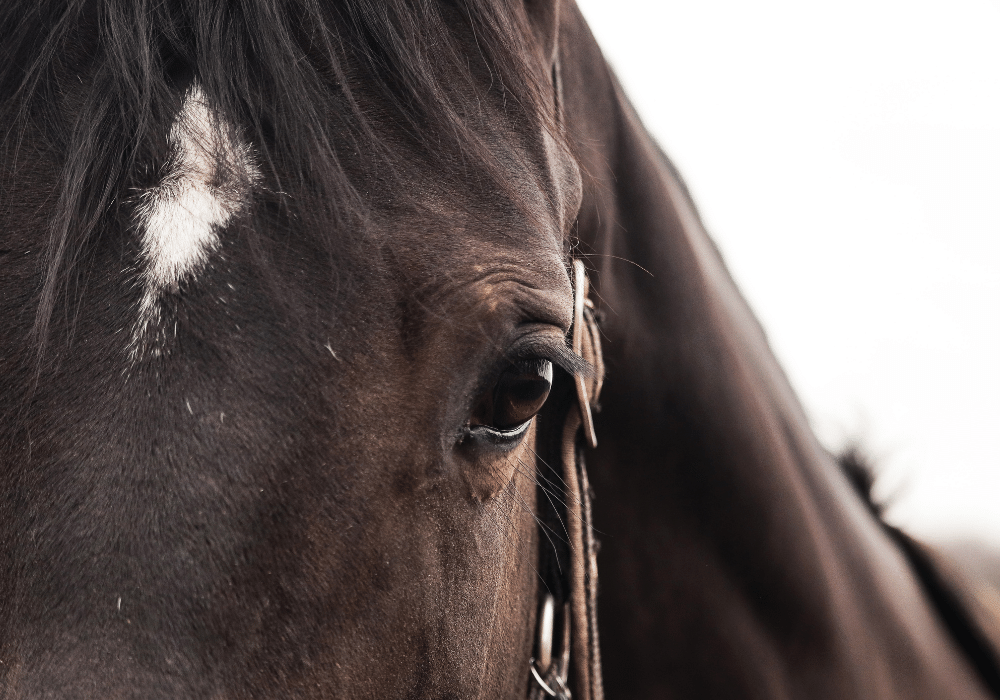Equine asthma is a condition affecting up to 14% of horses and ponies in the UK. With the right diagnosis, treatment and management, most horses with equine asthma will still lead very rewarding lives. If you believe that your horse may be suffering from equine asthma, you should contact your equine vet practice. They will be able to diagnose and treat the condition while giving you advice on how to manage equine asthma going forward. This blog article covers how equine asthma is diagnosed and what horse owners can do to help manage their horse's asthma.
For an overview of equine asthma, take a look at our guide.
How is Equine Asthma Diagnosed?
Acute attacks of asthma are rapidly diagnosed by vets, based on the horse’s history, physical examination and clinical signs. Treatment is required immediately to alleviate distress and suffering. Once the emergency is under control, other diagnostic tests may be carried out.
Diagnosis of equine asthma is achieved via respiratory tract endoscopy. An endoscope is inserted up your horses nose and into your horse’s windpipe. With this, the vet can see from the nostril down to where the trachea splits to go into each of the two lungs and up into the guttural pouches. This procedure is used to look for inflammation in the upper airways and evidence of disease which may explain the equine asthma symptoms. A tracheal wash is often taken, this is a sample of fluid taken from the trachea. This tracheal fluid often gives a good indication of pathology within the lungs and airway. Some horses require sedation for endoscopy and tracheal wash, others tolerate well on a nose twitch, your vet can discuss the options with you.
A bronchoalveolar lavage (BAL) is sometimes performed which collects a sample of cells from deep within the lungs. This is where a small amount of fluid is introduced into a small part of the lungs and then sucked back out, bringing with it a sample of the cells present. Horses generally require sedation for a bronchoalveolar lavage, a small tube is passed up their nose and deep into the lungs.
As equine asthma is an inflammatory condition, a diagnosis can be made based on the type of cells found in the samples recovered.
Once the horse has been diagnosed with equine asthma and the vet has determined the severity of the condition, treatment will begin. In most cases, corticosteroids are used to reduce inflammation. These can be administered in multiple ways. While there is no cure for equine asthma, medication and careful management can relieve symptoms and prevent flare-ups.
You can find more information on the symptoms of asthma in horses in our blog article.
Managing a Horse with Equine Asthma
If your horse has been diagnosed with equine asthma, management can be just as important as treatment. While equine asthma is incurable, there are a few things that horse owners can do to reduce its effect on daily life:
Maintain a Dust-Free Environment
It is essential that your horse is kept in as dust-free an environment as possible. This may mean changing your bedding to ensure your horse isn’t ingesting dust in his stable. Opt for dust-free shavings, paper, cardboard or pelleted straw. Your stable should have adequate drainage and should be regularly cleaned and disinfected. When mucking out, move the horse outside and ensure rubber mats are thoroughly cleaned.
You should avoid stabling your horse near to hay bales or the muck heap, while you should also aim to make his stable as ventilated as possible. Ideally, do not stable your horse in a barn with horses who are on straw bedding.
Provide Adequate Turnout
While stable alterations can be made, there is no doubt that the best place for most horses with equine asthma is outside! Your horse should be turned out as much as possible to reduce his exposure to dust.
Fresh air can help relieve symptoms, although some forms of equine asthma are associated with pasture time. If this is the case, keeping your horse in a windy field can help, while a nose net can help to filter out causative pollens.
Feed High-Quality Forage
You may also need to alter your forage, although all changes should be made gradually. If you feed hay, this can be soaked for less than 30 minutes to prevent the dust particles from being inhaled. You could also steam your hay - if you decide to use a hay steamer, be sure to follow the manufacturer’s instructions and clean the steamer regularly to prevent bacterial growth. Haylage is a good alternative to hay as it has a higher moisture content.
You should feed everything from the floor to ensure that any debris is able to leave the horse and not travel through the respiratory tract.
Consider an Exercise Plan
Exercise can promote the movement of mucus in the airways and improve the circulation of blood to the lungs. However, you should check with your equine vet before undertaking any exercise program.
Keep Vaccinations Up to Date
Finally, keeping vaccinations up to date will reduce the risk of contracting other diseases which may make the symptoms worse.
Avonvale Equine Vet Practice
We are an independent equine vet practice based in Upton, Near Banbury. Our equine vets provide 24/7 emergency call-outs, as well as free weekly zone visits for routine healthcare. Our vets and our clinic are well-equipped with the latest diagnostic, treatment and surgical facilities.
If you have any questions regarding equine asthma or any other respiratory issues, please call to speak to one of our vets on 01295 670501. If you are a new client, please register your horse with us online. In the meantime, you can read our case study to discover how we diagnosed Sprit the welsh cob's asthma, and helped his owners manage it.








